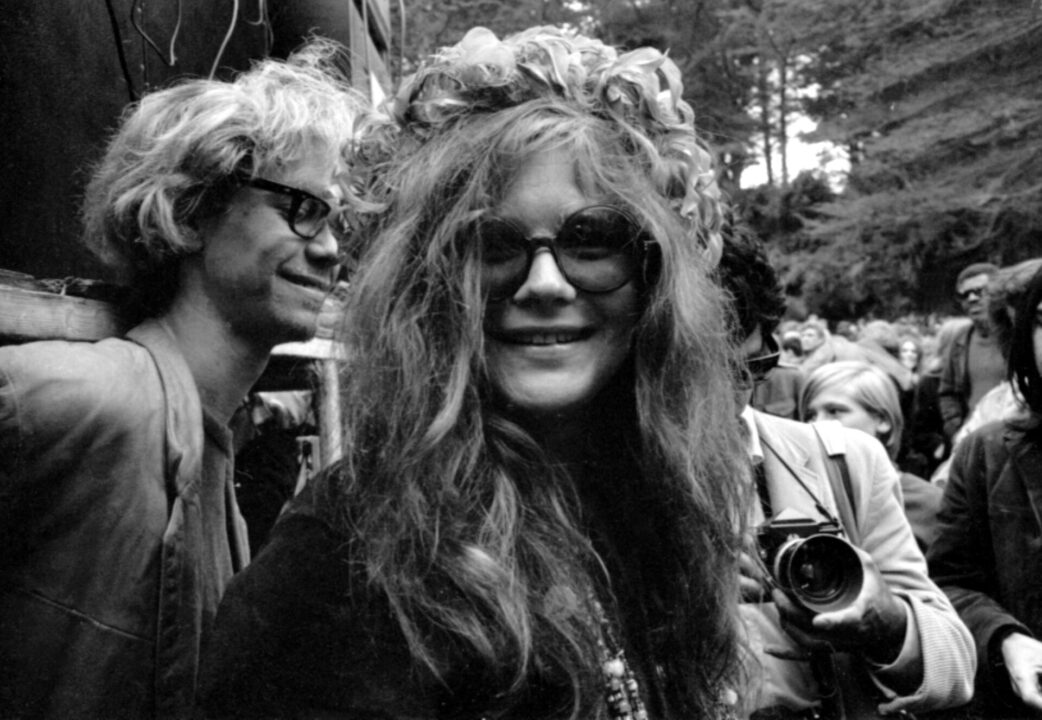This review was originally posted on 12/2/15
If Janis Joplin could have had it her way, every single person who saw her perform would check their inhibitions at the door and emerge a sweaty mess from the uncontrollable jumping and dancing. Whether it was a group of 10 or a crowd of 10,000, the energy radiating from Joplin’s presence was undeniable. On stage, she was a rock goddess with a bright future, most notable for her hits “Piece of my Heart” and “Me and Bobby McGee“, but offstage she was actually a lonely girl, addicted to heroin and battling inner demons. Another talented artist gone too soon, the documentary Janis: Little Girl Blue is a melancholic, yet inspiring, tribute to one of the biggest names of the musical and cultural revolution of the 1960s- Janis Joplin.
As many of us know some details of Joplin’s tragic story, her arc as the classic “struggling musician” is difficult to watch onscreen. Similarly to Asif Kapadia’s documentary Amy, about the talented Amy Winehouse, Joplin’s life was never easy. Growing up in Port Arthur, Texas, as an “average” student, receiving B’s and mostly C’s in school, and she was ostracized and constantly bullied by her peers. Once, in college in 1964, she was voted “Ugliest Man” as a schoolwide prank by a campus fraternity. Janis was cheated on and picked on, but despite the constant torture, she maintained a belief in herself, so much so that one day she packed her bags and hitched her way to San Francisco with no desire to ever look back.
Her parents wanted her to be a schoolteacher, but Janis’s only solace came through the power of music. It’s obvious how much Janis loved what she did, as the black and white footage from some of her first gigs portray. From her first major show at the Monterey Pop Festival in 1967 to her last big gig, Woodstock 1969, film moves along a semi-linear storyline with voiceover diary entries from Janis to her parents, usually apologizing for skipping school or running away from home. This stream-of-consciousness approach keeps the energy at an all-time high for the entire 103-minute runtime.
Quickly after this fall’s release of her groundbreaking expose Prophet’s Prey, Oscar-nominated director Amy Berg has delivered another film sure to pique the interest of the general audience, especially those who loved Janis and the music of the 60s. Berg captures intimate interviews not only with Janis’s younger brother and sister, but also childhood friends, and former bandmates who lift the veil of mystery from her tumultuous and short life. Fascinating interviews from her time with Big Brother & the Holding Company, along with secret confessions, make every minute of the film worth watching. Surprising insider information is divulged, like how Janis was highly influenced by Otis Redding while on an acid trip, and that is the reason why she began to incorporate quick staccatos, like a stuttering articulation of her words on stage.
Janis was never concerned with fame or fortune. In journal entries, she writes of feeling a constant internal conflict with herself that only quiets down when she’s onstage. After all, when the show’s over and the audience leaves, you’re left with yourself. At the end of the day, she only wanted to be happy, and don’t we all? Her writing is so personal and relatable, it sounds like it could have been written in 2015, not 1969. Behind the flamboyant jewelry, multi-patterned outfits, and wild hair, Janis Joplin was a very vulnerable girl. She had a youthful “Huck Finn” innocence that was constantly being pushed to the limit, but through all the hard times, she pushed herself with a smile on her face. She never tried to be anybody but herself, and as both a musician and a person, her courage and determination to succeed is something we could all learn from Janis Joplin.
Janis: Little Girl Blue is available on DVD Friday, 4/6.
Morgan Rojas
Certified fresh. For disclosure purposes, Morgan currently runs PR at PRETTYBIRD and Ventureland.


